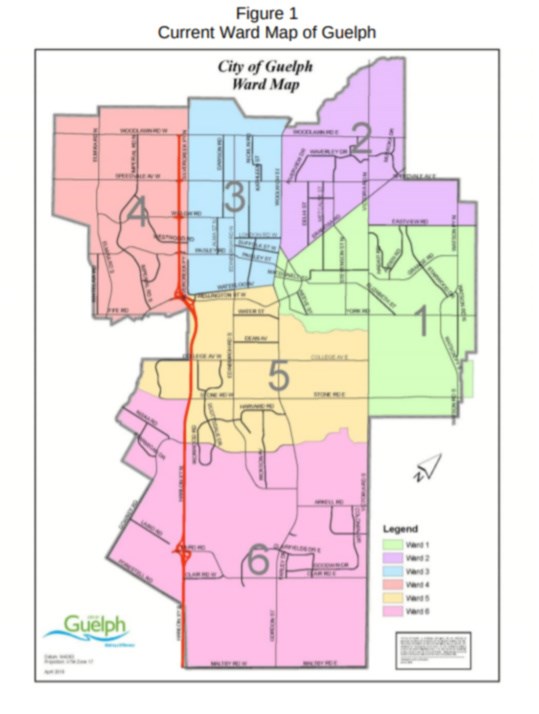Even if city council decides not to change the number of councillors, as recommended by consultants, city staff is still calling for a ward boundary review.
Why? Because ward populations vary by as much as 10,200 residents … or about the size of Elmira.
“Electoral divisions like wards are intended to reflect the distribution of population at a given time and, since Guelph’s population has increased from approximately 91,000 in 1991 to approximately 132,000 in 2016, the present wards do not reflect that change,” notes a report from consultants Watson & Associates.
Ward 6: 27,700, which covers the city’s south end, has 27,700 residents – by far the most of any ward. By comparison, Ward 3 has 17,500 residents.
Guelph wards by population:
Ward 6: 27,700
Ward 1: 24,700
Ward 5: 23,100
Ward 2: 23,000
Ward 4: 21,800
Ward 3: 17,500
“Ward 6 has been growing rapidly since these boundaries were established in 2006, meaning that the imbalance in the number of electors per ward would be even greater in 2022 unless some change is made in the ward system,” the report continues.
There are currently two part-time councillors per ward, but consultants are recommending council change to eight wards with one full-time councillor each following the 2022 election.
Those recommendations, as well as one calling for a ward boundary review, are the subject of a special council meeting on Nov. 5.
“By retaining two-member wards, it is difficult to get away from six wards in Guelph. Fewer than six wards for a city the size of Guelph does not seem desirable, and adding wards means adding two councillors for each new ward which would increase the total size of council,” explains the report.
“If council decides to move to one-member wards, it will have the flexibility to consider eight, nine, or ten wards, for example. This would simultaneously reduce the size of council, which some see as desirable, and at the same time reduce the size of the individual wards which would help to make the wards more homogeneous.”
If council opts to go ahead with a ward boundary review, work on it would start pretty quickly in order to have it completed, and approved by council, in time for the end of 2021 (with no active appeals). That’s the deadline for setting boundaries to be in place for the 2022 municipal election.
A ward boundary review, to be conducted by the same team of consultants, involves an analysis of population and growth trends, interviews with members of council and a public consultation process.
It’s anticipated that report and any recommendations to change ward boundaries would be ready early next year.
Should council decide to change its composition for the next term but a bylaw establishing new ward boundaries isn’t approved ahead of the Dec. 31, 2021 deadline, city staff will recommend the current composition remain in place until after the 2026 municipal election.
The city’s wards were established in 1990 and have not been comprehensively reviewed since. However, in 2006 the northern boundary of Ward 5 west of Woolwich Street was moved from the CNR line to Waterloo Avenue and the southern boundary moved from Stone Road closer to Kortright Road.
In 2016, the boundary between wards 5 and 6 just west of Victoria Road South was realigned to take account of a subdivision built since 2006.
